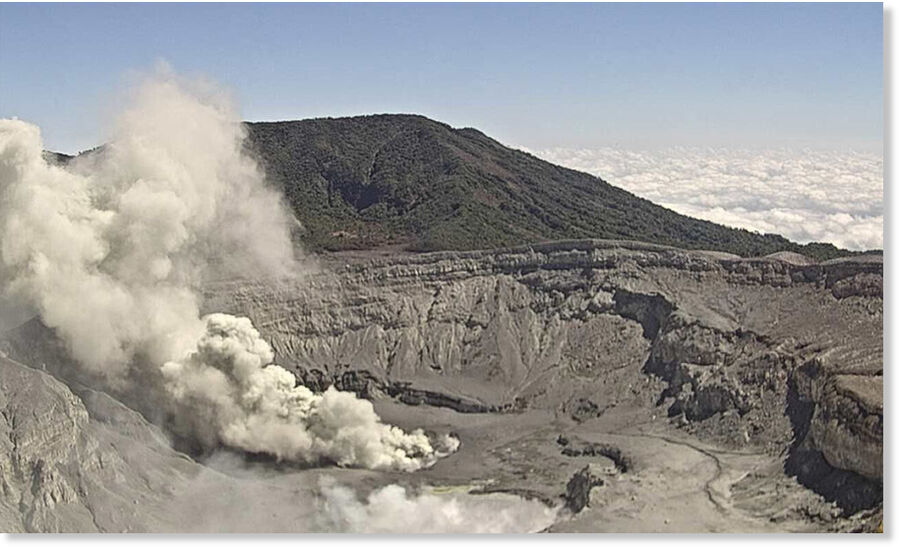
Maarten de Moor, a volcanologist from the Volcanological and Seismological Observatory of Costa Rica (OVSICORI), classified this eruption as passive, devoid of violent events or the expulsion of stones or incandescent material.
In response to the eruption of the Poás Volcano, the National Emergency Commission (CNE) declared a green alert on Monday for the cantons of Alajuela, due to ashfall and gas emissions. The cantons of Alajuela, Grecia, Naranjo, Poás, Sarchí, and Zarcero are currently under alert, as confirmed by the CNE.
Over recent months, the volcano has exhibited significant activity characterized by the release of gases and ash. Until a few weeks ago, conditions within the crater, including the presence of a natural lagoon, contained the volcanic materials within or around the National Park.
However, due to minimal rainfall at the summit in recent days, the lagoon has vanished. Consequently, wind patterns and low atmospheric humidity now facilitate the direct dispersion of volcanic products into the atmosphere, reaching distant locations.
Reports from authorities and local residents indicate continuous ashfall and strong sulfur odors, particularly prevalent in the western vicinity of the volcano.
The CNE advises several precautions. The population, especially those residing in high-risk areas, should stay informed and heed only official messages issued by national, regional, and municipal authorities.
The institution advises individuals to avoid unnecessary exposure to gases, and if unavoidable, to cover the respiratory tract and eyes. Moreover, they recommend closing windows and doors, placing damp cloths on doorways and air intakes, and dampening ashes to reduce dust.
According to OVSICORI, the Poas Volcano is currently classified under the warning category, indicating significant volcanic activity. Volcanoes falling under this category exhibit minor eruptions, bubbling, substantial emissions of acid gases, temperature fluctuations, seismic swarms, and slight inflation of the volcanic structure.
Source link

